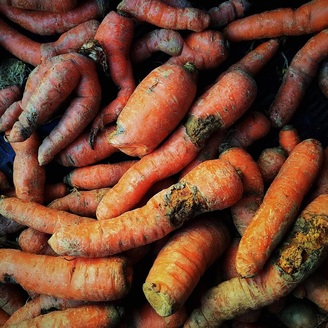 by Sarah Phillips, CEO and founder, Ugly Produce is Beautiful Food waste at the retail and consumer levels is particularly prevalent in the United States. We waste about 130 billion pounds of food in America each year. A recent survey, shows that half of us are aware of the scale of this $160 billion problem.. Almost 80 percent said they feel guilty when throwing food away, but 51 percent said it would be difficult to reduce household food waste. And 42 percent said they don’t have enough time to worry about it. In addition, the study found that In particular, many aren't aware that food that ends up in landfills contributes to the release of methane, a major contributor to global warming. Not to mention all the fuel and fertilizer expended in food production that could be saved if we just ate everything on our plate. We have to be encouraged, though. Although the percentage of Americans who say they’re willing to change behavior seems small, Dana Gunders, a food waste expert from the NRDC (National Resources Defense Fund, said the progress is encouraging. Four years ago, she said “nobody was talking about the issue and nobody was thinking about it,” she said. “To have over half the population think food waste is a serious problem is a tremendous achievement in terms of public awareness.” Source: Bloomberg News Join UPIB and follow @UglyProduceIsBeautiful and @food on Instagram. There are hundreds of pages of recipes, tips, techniques, and food information on my site, www.CraftyBaking.com
28 Comments
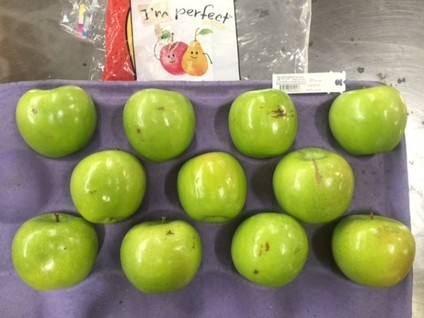 by Sarah Phillips, CEO and founder, Ugly Produce is Beautiful This week, a brand of apples from Washington state, called “I’m Perfect,” will make its debut in 300 Walmart stores in Florida as a test run. This is part of their mission to help stop food waste. Apples can become ugly from a hailstorm, high winds or even a string of very hot sunny days. This can damage the exterior skin of fruits. While the texture and flavor remain perfect, the exterior damage usually renders these fruits unsellable in the fresh market because they fail to meet traditional grade standards. Imperfect produce often ends up in landfills instead, contributing to food waste, which, in turn, is a major source of methane greenhouse gas emissions. For apples, blemish-related losses can reach as high as 30 percent, according to data from Columbia Marketing International that Wal-Mart cites, but no one really has a good handle on the exact statistics. This is a big giant step in the right direction to help alleviate food waste.! The next big step will be for WalMart to source locally, such as selling ugly Florida oranges in their Florida stores, for example. That would be huge! Consumer food waste in our industrialized nation is the biggest piece of the problem. That's what we aim to help reduce through our recipes, education, and how tos. What do you think? Read some comments already post on my @UglyProduceIsBeautiful Instagram account. Join UPIB and follow @UglyProduceIsBeautiful and @food on Instagram. There are hundreds of pages of recipes, tips, techniques, and food information on my site, www.CraftyBaking.com  by Sarah Phillips, CEO and founder, Ugly Produce is Beautiful Over half of all US households now purchase organic produce, according to the Organic Trade Association's presentation at the Organic Produce Summit. Organic banana purchases led the charge, growing by more than 30 percent last year, followed by blackberries (up 61%), organic salad greens and organic baby carrots (sales up 11% each), and organic Pink Lady Apples (up 96%), Organic "value-added" vegetables, defined as cubed squash, already peeled and chopped carrots and ready-to-use sliced mushrooms, grew by a whopping 54 percent in 2015 to almost $150 million. Since 2011, the sales of produce in this country have increased over 25 percent, with the greatest increase in the organic segment occurring in 2015. Convenience, a greater awareness of the health benefits of produce, and an increased interest in local food sources largely contributed to the increase. And driven by the desire to improve upon already healthy food choices, organic fruit sales have soared 123 percent during that time, while organic vegetable sales have jumped by 92 percent. "Data show that the organic shopper is an extremely health-conscious consumer who is completely dedicated to eating fresh fruits and vegetables. Organic is a top choice because of the confidence in organic as THE choice to avoid foods grown with toxic and persistent pesticides." Go eat your fruit and vegetables - I mean, the organic ones! Look for the USDA Organic seal on your produce before you buy. Join UPIB and follow @UglyProduceIsBeautiful and @food on Instagram. There are hundreds of pages of recipes, tips, techniques, and food information on my site, www.CraftyBaking.com  by Sarah Phillips, CEO and founder, Ugly Produce is Beautiful Our preference for prettiness reaches into every area of our lives, including food. “Several studies have shown that how foods are presented can influence our liking for them,” said Debra Zellner, a professor of psychology at Montclair State University in New Jersey. In a 2014 study published in the science journal Appetite, Zellne served study participants two chicken meals prepared by chefs, but was presented in two different ways on two different nights - one was plated less attractive than the other. Although the two presentations were judged as equally “neat”, one was judged as more attractive:
The conclusion they reached was that: "How attractively food is plated can affect liking for the flavor of the food and could be used to increase acceptance of 'healthy' foods." It's been said often that we eat with our eyes first. What about applying the same techniques to increasing the public acceptance of ugly produce? I strongly believe that by showing you how to cook and bake attractive recipes with ugly and imperfect produce will help increase its acceptance at the marketplace. I also believe in educating you about the problem, and giving you at home skills to help you prevent food waste. If we all do our collective part, I believe that change can come about. That's why giving recipes and tips and techniques are so important with this campaign; they put the skills in our hands so each one of us can rescue food from our kitchen counter and fridge that might otherwise go to waste. There are hundreds of pages of recipes and food information also on my site, www.CraftyBaking.com Join UPIB and follow @UglyProduceIsBeautiful and @food on Instagram.  Baker Creek Heirloom Seeds carries one of the largest selections of seeds from the 19th century, including many Asian and European varieties - some 1,800 varieties of vegetables, flowers and herbs. This is so important because the company has become a place to promote and preserve our agricultural and culinary heritage. Founded by Jere Gettle in 1998, and now joined by his wife Emilee and children, It is their goal to educate everyone about a better, safer food supply and fight gene-altered frankenfood and the companies that support it. They also work extensively to supply free seeds to many of the world’s poorest countries, as well as here at home in school gardens and other educational projects. They have a large mail order catalogue, magazine, and two store locations - the Baker Creek Seed Store headquarters in Mansfield, MO, and a second one in Sonoma County, CA, in the beautiful town of Petaluma When I contacted Baker Creek Heirloom Seeds to sponsor our Ugly Produce Beauty Pageant on September 17, in Petaluma, CA, they enthusiastically said YES! Ugly Produce is Beautiful is partnering with the California Farmers' Guild to host the Ugly Produce Beauty Pageant during the Farmer Olympics. We couldn't be more pleased! We look forward to having more co-branded partnerships to help further our cause. Please contact me at [email protected] if interested. Thanks! Join UPIB and follow @UglyProduceIsBeautiful and @food on Instagram.  by Sarah Phillips, CEO and founder, Ugly Produce is Beautiful Americans throw away almost as much food as they eat because of a “cult of perfection”, deepening hunger and poverty, and inflicting a heavy toll on the environment, according to a recent article in TheGuardian. (9:29am, 7-15-2016) Some $165 billion dollars worth of food and produce annually is wasted all along the supply chain. Produce is lost and wasted in fields, warehouses, packaging, distribution, supermarkets, restaurants and at home. What's being blamed is our unrealistic and unyielding cosmetic standards, according to official data and interviews with dozens of farmers, packers, truckers, researchers, campaigners and government officials. But I also believe that an increase in consumer awareness about recipes, food storage, and learning about creative ways to use left-overs, also helps combat food waste at home, where some of the greatest amount occurs. That I can help you with - I have 30 years of experience in creating recipes and proactively educating about healthy food! It's my passion! Read about my extensive Food Storage Tips and more on my website, www.CraftyBaking.com Join UPIB and follow @UglyProduceIsBeautiful and @food on Instagram. Heirloom fruits and vegetables are so popular. So what does it mean to be called an heirloom?7/14/2016 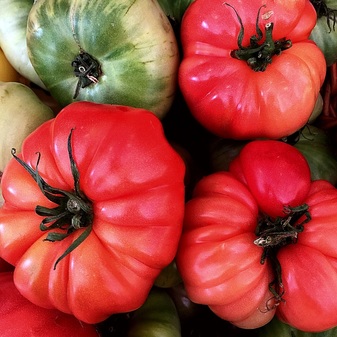 by Sarah Phillips, CEO and founder, Ugly Produce is Beautiful An heirloom plant, heirloom variety, or heirloom vegetable, sometimes called a heritage plant, is an old cultivar (some say it has to at least 50 years old) that is "still maintained by gardeners and farmers particularly in isolated or ethnic communities". They may have been commonly grown during earlier periods in human history, but are not typically used in modern large-scale agriculture. The reason is that heirloom varieties tend not to be used in large scale agriculture is that they are variable and unpredictable. Although most heirlooms have superior flavor because they are open-pollinated (meaning they rely on natural pollination from insects, birds, animals, or the wind), their shape, size, and color results, and yield are more variable within a species. Our food culture is built on beauty standards and sameness, rather than on taste and variability. Agribusiness relies upon predictable produce yield per acre, and produce that can be shipped long distances for greater sales (ie: heirloom tomatoes have thinner skins and bruise easily), tend not uniform in size or shape (less likely to fit neatly into pre made containers), or have a surprising variety of color (unexpected presentation for consumers). These factors make most heirloom varieties perfect for farmers' markets and local produce stands, but not perfect for sale in today's multi-chain multistate and international supermarkets and grocery stores. When a produce comes from a plant that has been cultivated to have specific DNA for specific qualities - size, color, shape - it has to be replicated from new seeds purchased from a seed company every year or from new plants or clones. This starts to limit plant biodiversity and sets up scenarios for species endangerment. Read about Seedless Watermelon. On the other hand, heirloom varieties continue over time when growers save the seeds of from their best plants to be replanted every year. With their unique shapes, sizes, and colors, heirloom plants often look different from the bulk of the perfect fruits and vegetables we are used to buying at the supermarkets and grocery stores. Besides, if you have ever tried a local heirloom tomato, no wonder they have become so popular - their flavor, not to mention colors and shapes - are superior and enliven any meal! Try making our Heirloom Tomato Tart, Heirloom Tomato, Watermelon and Prosciutto Salad, Grilled Vegetable Flatbread and more on my website, www.CraftyBaking.com Join UPIB and follow @UglyProduceIsBeautiful and @food on Instagram.  by Sarah Phillips, CEO and founder, Ugly Produce is Beautiful Two types of food that contain trace levels of highly hazardous pesticides are leafy greens - kale and collard greens - and hot peppers. They were frequently found to be contaminated with insecticides toxic to the human nervous system. The Environmental Working Group (EWG.org) recommends that you buy organic instead. Source. Did you know that less than one percent of our farmland is dedicated to growing organic crops. If we invested more in organic farming, we’d not only protect the environment, but we’d make organic food more affordable and accessible for everyone – meaning more clean, healthy food for our families, grown right here in the United States. Help by signing an important petition! Join UPIB and follow @UglyProduceIsBeautiful on Instagram. 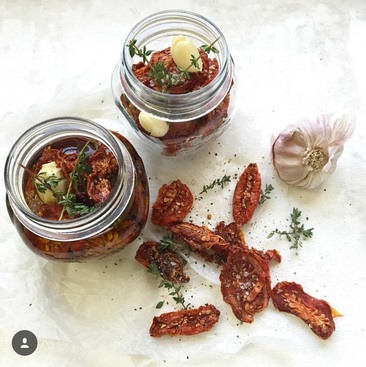 by Sarah Phillips, CEO and founder, Ugly Produce is Beautiful Instagrammer Jane Collins from www.janecollins.com.au and www.sizzleandswirl.com was gifted an abundance of garden tomatoes from her friend. She didn't want to waste any of her bounty, since fresh tomatoes keep only a day or two. Jane decided to preserve some by drying them using our Sundried Tomatoes Recipe and extending their shelf life to a month or more. An option in our recipe, after drying, is to further flavor them - she added olive oil, and she further flavored them with garlic, thyme, cracked pepper, and sea salt. The result she reports: "they taste amazing!" They also look amazing! We posted this on our @UglyProduceIsBeautiful Instagram account! Food styling and photo by Jane Collins. Join UPIB and follow @UglyProduceIsBeautiful on Instagram.  by Sarah Phillips, CEO and founder, Ugly Produce is Beautiful Did you know that we consumers account for the largest share of food waste in America? The average American consumer wastes 10 times as much food as someone in Southeast Asia,12 up 50 percent from Americans in the 1970s. American families throw out approximately 25 percent of the food and beverages they buy. In terms of total mass, fresh fruits and vegetables account for the largest losses, followed closely by dairy, and meat/poultry/fish. We recommend, along with the National Resources Defense Council (NRDC) that we Americans can help reduce waste by learning when food goes bad, buying imperfect produce, and storing and cooking food with an eye to reducing waste. (NRDC.org) Other recommendations we have at Ugly Produce is Beautiful are to: 1. Properly store food. I have developed food storage charts for you to refer to; 2. Learn how to cook and bake with ugly produce or produce that is on its last-legs or over-ripe rather than throwing it away. I have ample recipes for you to use; 3. Rotate food in your fridge and cupboards. I like to rotate food in my fridge at least every other day, and in my cabinets about once a week or month. It always amazes me what perfectly good food I find that I have forgotten about; 4. Shop from a list and only buy what you need from the grocery store; 5. Serve food from small plates or do not overfill regular sized dinner plates. Food waste typically occurs from serving too much food, which tends to goes to waste; 6. Learn to repurpose left-overs or use what you have saved from previous meals stored in the fridge or freezer; 7. Avoid sales with perishable goods unless you know that you're going to consume them right away; 8. Don't wash fruits and vegetables in advance of storage because they spoil more rapidly; 9. Educate yourself about the usable and nutritional parts of fruits and vegetables that can be eaten rather than thrown away; 10. Don't grocery shop when you're hungry, as we tend to impulse buy or buy a lot more. Do you have any food saving or food waste prevention tips that you can add here? We'd love to hear them! Join UPIB and follow @UglyProduceIsBeautiful on Instagram. |
UPIB BLOGWelcome to the Ugly Produce is Beautiful Blog where we discuss important topics. Archives
November 2016
Categories |
|
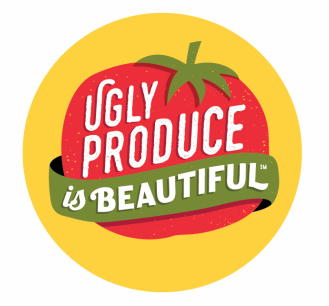
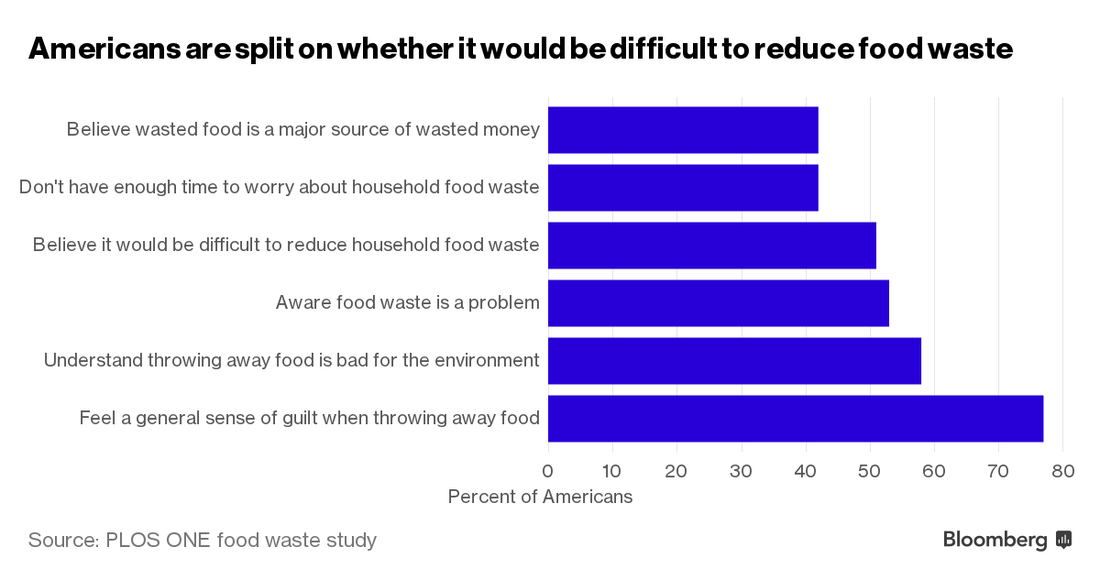

 RSS Feed
RSS Feed
